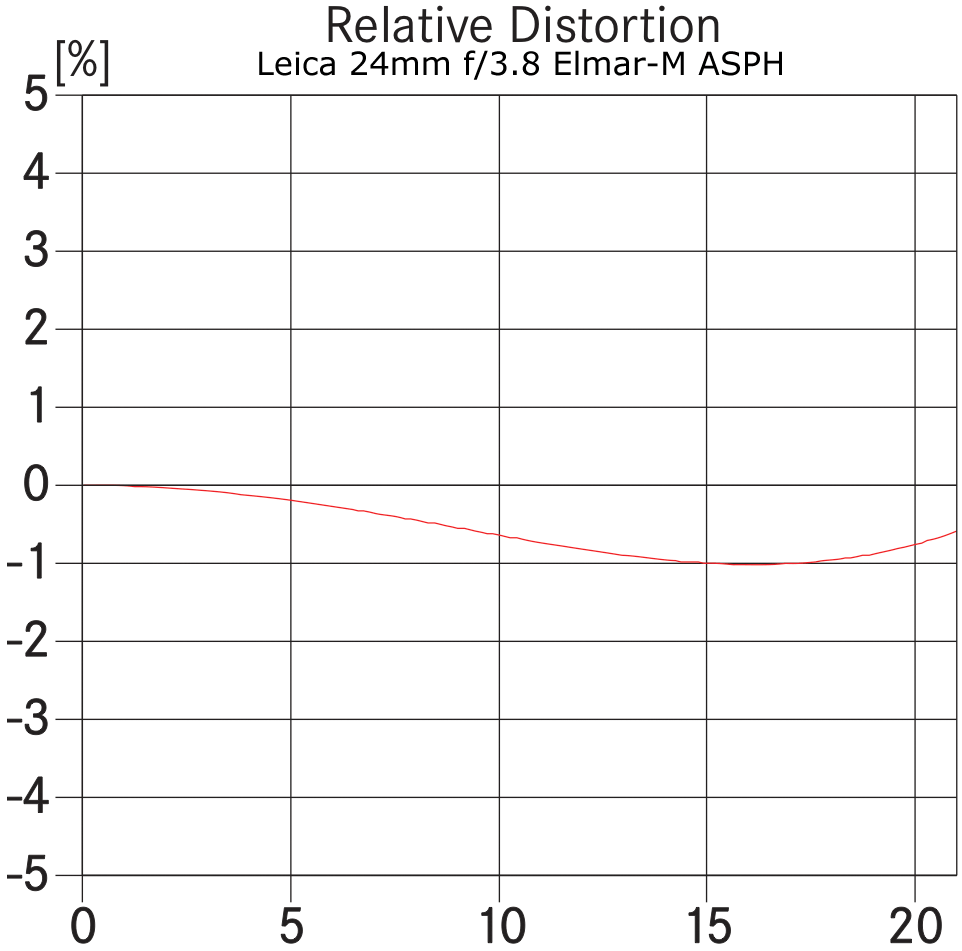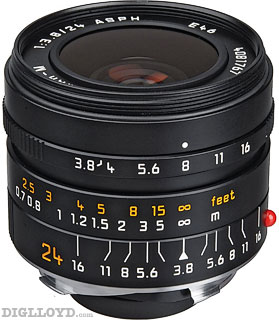EXCERPT page containing first few paragraphs. 2024-04-25 04:29:07
UA_SEARCH_BOT_compatible_botmozilla/5.0 applewebkit/537.36 (khtml, like gecko; compatible; claudebot/1.0; +claudebot@anthropic.com) @ 52.14.221.113
For full access, subscribe here. Or click title to login. ![]()
Distortion: 24mm f/3.8 Elmar-M ASPH
Distortion is of the wave type: mild barrel distortion approaching the frame edge, then reversing to mild pincushion.
This is eoutstanding performance for a 24mm lens. Distortion is about half that of the 24/1.4 Summilux-M ASPH and half that of the 24/2.8 Elmarit-M ASPH. Very few prime lenses have this low a distortion behavior.
The only situation in which 1% distortion becomes visible is an even horizon or man-mad structure, but you’ll be hard-pressed to find a 24mm lens with less distortion. Even the various Nikon/Canon tilt/shift lenses have some barrel distortion of similar magnitudes, or more.
Observe that the 24/3.8 has less than half the distortion of its 24/1.4 sibling. This alone is a reason to use it preferentially if one regularly shoots man-made structures, horizons or seascapes, etc.
Article continues for subscribers...
Diglloyd Guide to Leica is by yearly subscription. Subscribe now for about 25 cents a day ($90/year).
BEST DEAL: get full access to ALL 8 PUBLICATIONS for about 75 cents a day!
Diglloyd Guide to LEICA contains in-depth coverage of Leica M system cameras and lenses, with additional coverage of Leica M Monochrom, Leica Q.
Special emphasis is placed on Leica M lenses and certain Zeiss ZM lenses.
- Make better images by learning how to get the best results right away.
- Save money by choosing the right lens for your needs the first time, particularly the Summilux/Summicron/Elmarit choice and/or Zeiss ZM.
- Make better images, a sort of “cheat sheet” saving yourself months or years of ad-hoc learning. Processing parameters are discussed and shown.
- Jaw-dropping image quality found nowhere else utilizing Retina-grade images up to full camera resolution, plus large crops [past 2 years or so].
- Real world examples with insights found nowhere else. Make sharper images just by understanding lens behavior you won’t read about elsewhere.
- Aperture series from wide open through stopped down, showing the full range of lens performance and bokeh.
- Optical quality analysis of field curvature, focus shift, sharpness, flare, distortion, and performance in the field.
Want a preview? Click on any page below to see an excerpt as well as extensive blog coverage, for example on Leica.





